Traditional Rubber Stamps
These stamps are used with a separate stamp pad. They are made from plastic or jarrah. Unlike cheap pine, an Australian hardwood does not warp, and unlike the cheap mdf mounts you see around, It does not swell when wet. The wooden mounts can be made to any size. For all larger sizes please contact us with your dimensions and we’ll be happy to give you a quote.
Our beautiful, bespoke wooden mounts are made from Australian hardwood. They are designed to fit comfortably in your hands. They have a unique “vintage” look. Because of the design, the pressure is evenly distributed at the base of the stamp where it is required. This gives an even impression across the whole stamp base. The larger sizes are made from “cedar” and come with a brass handle. These also have a beautiful, vintage look.
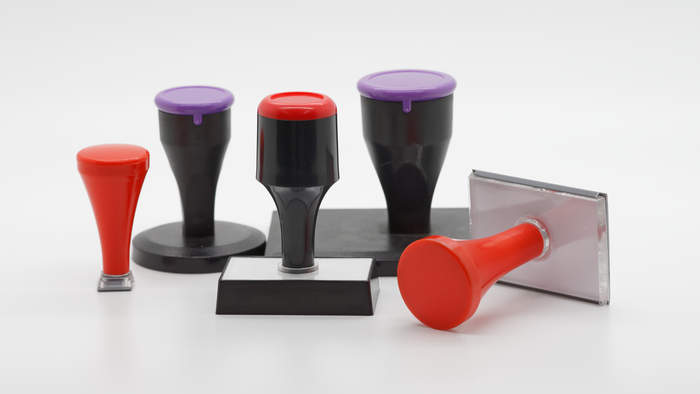
Traditional Plastic Mount
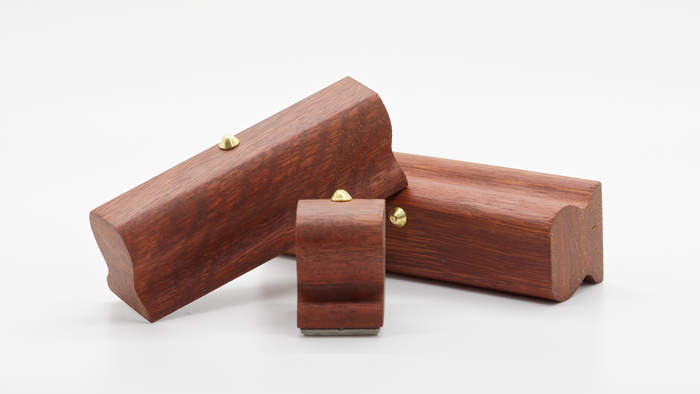
Traditional Wooden Mount
Traditional Rubber Stamp Options
Click item below for full details
50mm x 5mm
Plastic: $25 | Wood: N/A
All prices include GST
Image not to exact scale, shown for dimensional purposes only.
Please confirm exact sizing using a ruler prior to ordering.
62mm x 5mm
Plastic: $25 | Wood: N/A
All prices include GST
Image not to exact scale, shown for dimensional purposes only.
Please confirm exact sizing using a ruler prior to ordering.
12mm x 9mm
Plastic: $25 | Wood: N/A
All prices include GST
Image not to exact scale, shown for dimensional purposes only.
Please confirm exact sizing using a ruler prior to ordering.
37mm x 9mm
Plastic: $25 | Wood: $39
All prices include GST
Image not to exact scale, shown for dimensional purposes only.
Please confirm exact sizing using a ruler prior to ordering.
39mm x 9mm
Plastic: $25 | Wood: $39
All prices include GST
Image not to exact scale, shown for dimensional purposes only.
Please confirm exact sizing using a ruler prior to ordering.
50mm x 9mm
Plastic: $25 | Wood: $39
All prices include GST
Image not to exact scale, shown for dimensional purposes only.
Please confirm exact sizing using a ruler prior to ordering.
62mm x 9mm
Plastic: $25 | Wood: $39
All prices include GST
Image not to exact scale, shown for dimensional purposes only.
Please confirm exact sizing using a ruler prior to ordering.
87mm x 9mm
Plastic: $25 | Wood: $39
All prices include GST
Image not to exact scale, shown for dimensional purposes only.
Please confirm exact sizing using a ruler prior to ordering.
12mm x 12mm
Plastic: $25 | Wood: $39
All prices include GST

Image not to exact scale, shown for dimensional purposes only.
Please confirm exact sizing using a ruler prior to ordering.
49mm x 12mm
Plastic: $25 | Wood: $39
All prices include GST

Image not to exact scale, shown for dimensional purposes only.
Please confirm exact sizing using a ruler prior to ordering.
97mm x 12mm
Plastic: $25 | Wood: $39
All prices include GST

Image not to exact scale, shown for dimensional purposes only.
Please confirm exact sizing using a ruler prior to ordering.
37mm x 15mm
Plastic: $25 | Wood: $39
All prices include GST

Image not to exact scale, shown for dimensional purposes only.
Please confirm exact sizing using a ruler prior to ordering.
50mm x 15mm
Plastic: $25 | Wood: $39
All prices include GST

Image not to exact scale, shown for dimensional purposes only.
Please confirm exact sizing using a ruler prior to ordering.
62mm x 15mm
Plastic: $25 | Wood: $39
All prices include GST

Image not to exact scale, shown for dimensional purposes only.
Please confirm exact sizing using a ruler prior to ordering.
75mm x 15mm
Plastic: $25 | Wood: $39
All prices include GST

Image not to exact scale, shown for dimensional purposes only.
Please confirm exact sizing using a ruler prior to ordering.
88mm x 15mm
Plastic: $25 | Wood: $39
All prices include GST

Image not to exact scale, shown for dimensional purposes only.
Please confirm exact sizing using a ruler prior to ordering.
17mm x 17mm
Plastic: $25 | Wood: $39
All prices include GST

Image not to exact scale, shown for dimensional purposes only.
Please confirm exact sizing using a ruler prior to ordering.
37mm x 17mm
Plastic: $25 | Wood: $39
All prices include GST

Image not to exact scale, shown for dimensional purposes only.
Please confirm exact sizing using a ruler prior to ordering.
47mm x 17mm
Plastic: $25 | Wood: $39
All prices include GST

Image not to exact scale, shown for dimensional purposes only.
Please confirm exact sizing using a ruler prior to ordering.
62mm x 17mm
Plastic: $25 | Wood: $39
All prices include GST

Image not to exact scale, shown for dimensional purposes only.
Please confirm exact sizing using a ruler prior to ordering.
82mm x 17mm
Plastic: $26 | Wood: $40
All prices include GST

Image not to exact scale, shown for dimensional purposes only.
Please confirm exact sizing using a ruler prior to ordering.
100mm x 17mm
Plastic: $30 | Wood: $46
All prices include GST

Image not to exact scale, shown for dimensional purposes only.
Please confirm exact sizing using a ruler prior to ordering.
75mm x 20mm
Plastic: $26 | Wood: $40
All prices include GST

Image not to exact scale, shown for dimensional purposes only.
Please confirm exact sizing using a ruler prior to ordering.
37mm x 24mm
Plastic: $25 | Wood: $39
All prices include GST

Image not to exact scale, shown for dimensional purposes only.
Please confirm exact sizing using a ruler prior to ordering.
47mm x 22mm
Plastic: $25 | Wood: $39
All prices include GST

Image not to exact scale, shown for dimensional purposes only.
Please confirm exact sizing using a ruler prior to ordering.
62mm x 22mm
Plastic: $25 | Wood: $39
All prices include GST

Image not to exact scale, shown for dimensional purposes only.
Please confirm exact sizing using a ruler prior to ordering.
72mm x 22mm
Plastic: $26 | Wood: $42
All prices include GST

Image not to exact scale, shown for dimensional purposes only.
Please confirm exact sizing using a ruler prior to ordering.
88mm x 24mm
Plastic: $28 | Wood: $44
All prices include GST

Image not to exact scale, shown for dimensional purposes only.
Please confirm exact sizing using a ruler prior to ordering.
99mm x 22mm
Plastic: $30 | Wood: $46
All prices include GST

Image not to exact scale, shown for dimensional purposes only.
Please confirm exact sizing using a ruler prior to ordering.
52mm x 27mm
Plastic: $25 | Wood: $39
All prices include GST

Image not to exact scale, shown for dimensional purposes only.
Please confirm exact sizing using a ruler prior to ordering.
62mm x 27mm
Plastic: $25 | Wood: $39
All prices include GST

Image not to exact scale, shown for dimensional purposes only.
Please confirm exact sizing using a ruler prior to ordering.
74mm x 30mm
Plastic: $26 | Wood: $40
All prices include GST

Image not to exact scale, shown for dimensional purposes only.
Please confirm exact sizing using a ruler prior to ordering.
87mm x 27mm
Plastic: $32 | Wood: $48
All prices include GST

Image not to exact scale, shown for dimensional purposes only.
Please confirm exact sizing using a ruler prior to ordering.
100mm x 27mm
Plastic: $34 | Wood: $50
All prices include GST

Image not to exact scale, shown for dimensional purposes only.
Please confirm exact sizing using a ruler prior to ordering.
30mm x 30mm
Plastic: $25 | Wood: $39
All prices include GST

Image not to exact scale, shown for dimensional purposes only.
Please confirm exact sizing using a ruler prior to ordering.
50mm x 30mm
Plastic: $25 | Wood: $39
All prices include GST

Image not to exact scale, shown for dimensional purposes only.
Please confirm exact sizing using a ruler prior to ordering.
61mm x 30mm
Plastic: $25 | Wood: $39
All prices include GST

Image not to exact scale, shown for dimensional purposes only.
Please confirm exact sizing using a ruler prior to ordering.
125mm x 30mm
Plastic: $42 | Wood: $62
All prices include GST

Image not to exact scale, shown for dimensional purposes only.
Please confirm exact sizing using a ruler prior to ordering.
32mm x 32mm
Plastic: $26 | Wood: $46
All prices include GST

Image not to exact scale, shown for dimensional purposes only.
Please confirm exact sizing using a ruler prior to ordering.
52mm x 32mm
Plastic: $26 | Wood: $46
All prices include GST

Image not to exact scale, shown for dimensional purposes only.
Please confirm exact sizing using a ruler prior to ordering.
57mm x 32mm
Plastic: $30 | Wood: $50
All prices include GST

Image not to exact scale, shown for dimensional purposes only.
Please confirm exact sizing using a ruler prior to ordering.
72mm x 32mm
Plastic: $34 | Wood: $54
All prices include GST

Image not to exact scale, shown for dimensional purposes only.
Please confirm exact sizing using a ruler prior to ordering.
88mm x 32mm
Plastic: $34 | Wood: $54
All prices include GST

Image not to exact scale, shown for dimensional purposes only.
Please confirm exact sizing using a ruler prior to ordering.
102mm x 32mm
Plastic: $34 | Wood: $54*
All prices include GST

Image not to exact scale, shown for dimensional purposes only.
Please confirm exact sizing using a ruler prior to ordering.
37mm x 37mm
Plastic: $28 | Wood: $48
All prices include GST

Image not to exact scale, shown for dimensional purposes only.
Please confirm exact sizing using a ruler prior to ordering.
56mm x 37mm
Plastic: $30 | Wood: $50
All prices include GST

Image not to exact scale, shown for dimensional purposes only.
Please confirm exact sizing using a ruler prior to ordering.
81mm x 37mm
Plastic: $38 | Wood: $58
All prices include GST

Image not to exact scale, shown for dimensional purposes only.
Please confirm exact sizing using a ruler prior to ordering.
99mm x 37mm
Plastic: $40 | Wood: $60*
All prices include GST

Image not to exact scale, shown for dimensional purposes only.
Please confirm exact sizing using a ruler prior to ordering.
112mm x 37mm
Plastic: $42 | Wood: $62*
All prices include GST

Image not to exact scale, shown for dimensional purposes only.
Please confirm exact sizing using a ruler prior to ordering.
42mm x 42mm
Plastic: $32 | Wood: $52
All prices include GST

Image not to exact scale, shown for dimensional purposes only.
Please confirm exact sizing using a ruler prior to ordering.
62mm x 42mm
Plastic: $36 | Wood: $56
All prices include GST

Image not to exact scale, shown for dimensional purposes only.
Please confirm exact sizing using a ruler prior to ordering.
72mm x 42mm
Plastic: $38 | Wood: $58
All prices include GST

Image not to exact scale, shown for dimensional purposes only.
Please confirm exact sizing using a ruler prior to ordering.
77mm x 42mm
Plastic: $38 | Wood: $58
All prices include GST

Image not to exact scale, shown for dimensional purposes only.
Please confirm exact sizing using a ruler prior to ordering.
97mm x 42mm
Plastic: $42 | Wood: $62
All prices include GST

Image not to exact scale, shown for dimensional purposes only.
Please confirm exact sizing using a ruler prior to ordering.
75mm x 50mm
Plastic: $39 | Wood: $59
All prices include GST

Image not to exact scale, shown for dimensional purposes only.
Please confirm exact sizing using a ruler prior to ordering.
52mm x 52mm
Plastic: $35 | Wood: $55
All prices include GST

Image not to exact scale, shown for dimensional purposes only.
Please confirm exact sizing using a ruler prior to ordering.
72mm x 52mm
Plastic: $39 | Wood: $59
All prices include GST

Image not to exact scale, shown for dimensional purposes only.
Please confirm exact sizing using a ruler prior to ordering.
102mm x 52mm
Plastic: $42 | Wood: $62*
All prices include GST

Image not to exact scale, shown for dimensional purposes only.
Please confirm exact sizing using a ruler prior to ordering.
62mm x 62mm
Plastic: $39 | Wood: $59
All prices include GST

Image not to exact scale, shown for dimensional purposes only.
Please confirm exact sizing using a ruler prior to ordering.
100mm x 62mm
Plastic: $48 | Wood: $68*
All prices include GST

Image not to exact scale, shown for dimensional purposes only.
Please confirm exact sizing using a ruler prior to ordering.
67mm x 67mm
Plastic: $48 | Wood: $68
All prices include GST

Image not to exact scale, shown for dimensional purposes only.
Please confirm exact sizing using a ruler prior to ordering.
77mm x 67mm
Plastic: $50 | Wood: $70
All prices include GST

Image not to exact scale, shown for dimensional purposes only.
Please confirm exact sizing using a ruler prior to ordering.
102mm x 67mm
Plastic: $50 | Wood: $70*
All prices include GST

Image not to exact scale, shown for dimensional purposes only.
Please confirm exact sizing using a ruler prior to ordering.
52mm x 35mm Oval
Plastic: $30 | Wood: N/A
All prices include GST
Image not to exact scale, shown for dimensional purposes only.
Please confirm exact sizing using a ruler prior to ordering.
20mm Round
Plastic: $25 | Wood: N/A
All prices include GST

Image not to exact scale, shown for dimensional purposes only.
Please confirm exact sizing using a ruler prior to ordering.
29mm Round
Plastic: $25 | Wood: N/A
All prices include GST
Image not to exact scale, shown for dimensional purposes only.
Please confirm exact sizing using a ruler prior to ordering.
47mm Round
Plastic: $35 | Wood: N/A
All prices include GST
Image not to exact scale, shown for dimensional purposes only.
Please confirm exact sizing using a ruler prior to ordering.
* Landscape only, for portrait add $6.00 for a brass handle
FOR ALL LARGER SIZES, PLEASE EMAIL US WITH YOUR LOGO AND REQUIRED SIZE.
About Traditional Rubber Stamps
The origin of the first rubber stamp has been widely disputed over the years. It is said that Charles Goodyear was the first to discover the process of vulcanisation when he accidentally dropped some rubber and sulphur on the stove.
Vulcanised rubber was then used in early dentistry as part of cost-effective denture bases. From there, the original rubber stamp is said to have been created in 1866 by James Woodruff after he took the techniques used by dentists and applied them to letter moulds.
Rubber stamps are a way in which some type of ink from an ink pad, made of dye or pigment is applied to an image or pattern that has been carved, moulded, laser engraved or vulcanized, onto a sheet of rubber. The rubber is often mounted onto a more stable object such as a wood, plastic mount or an acrylic block.
All our rubber stamps are laser engraved using the highest quality rubber. The sizes of our rubber stamps start from 1cm image area.
Rubber stamps are a great way to get your brand out there. You can stamp your rubber stamp on bags, cards, boxes, coffee cups, any matt, uncoated surface.
All you need is your rubber stamp and an appropriate ink pad. Of course, if you have a coated surface, there is special ink you can use with your rubber stamp for that as well.
We can make a rubber stamp out of just about any good quality black and white image. Colour and shading on artwork doesn’t work on rubber stamps, the image must be true black for the rubber stamp to work correctly. The laser engraver will only read true black and white. Think of black text (no shaded drop shadows) and black and white cartoon type images.
We make rubber stamps using plastic mounts, wooden block mounts, wooden stamps with handles and our latest are round wooden mounts with a black wooden handle. There is a rubber stamp to suit any situation. You are limited only by your imagination.
Ordering
To place your order you can simply use the form to your right, print off the PDF and email it to us, or just send us an email with your requirements.
You can also send any artwork files by email.
Our email address is:
stamps@penrithrubberstamps.com.au
Standard orders have a delivery charge of $12.00.
Manual Order Form:
Click to download PDF Order Form
Online quote/enquiry Form
A proof will be provided prior to production on acceptance of quotation..
